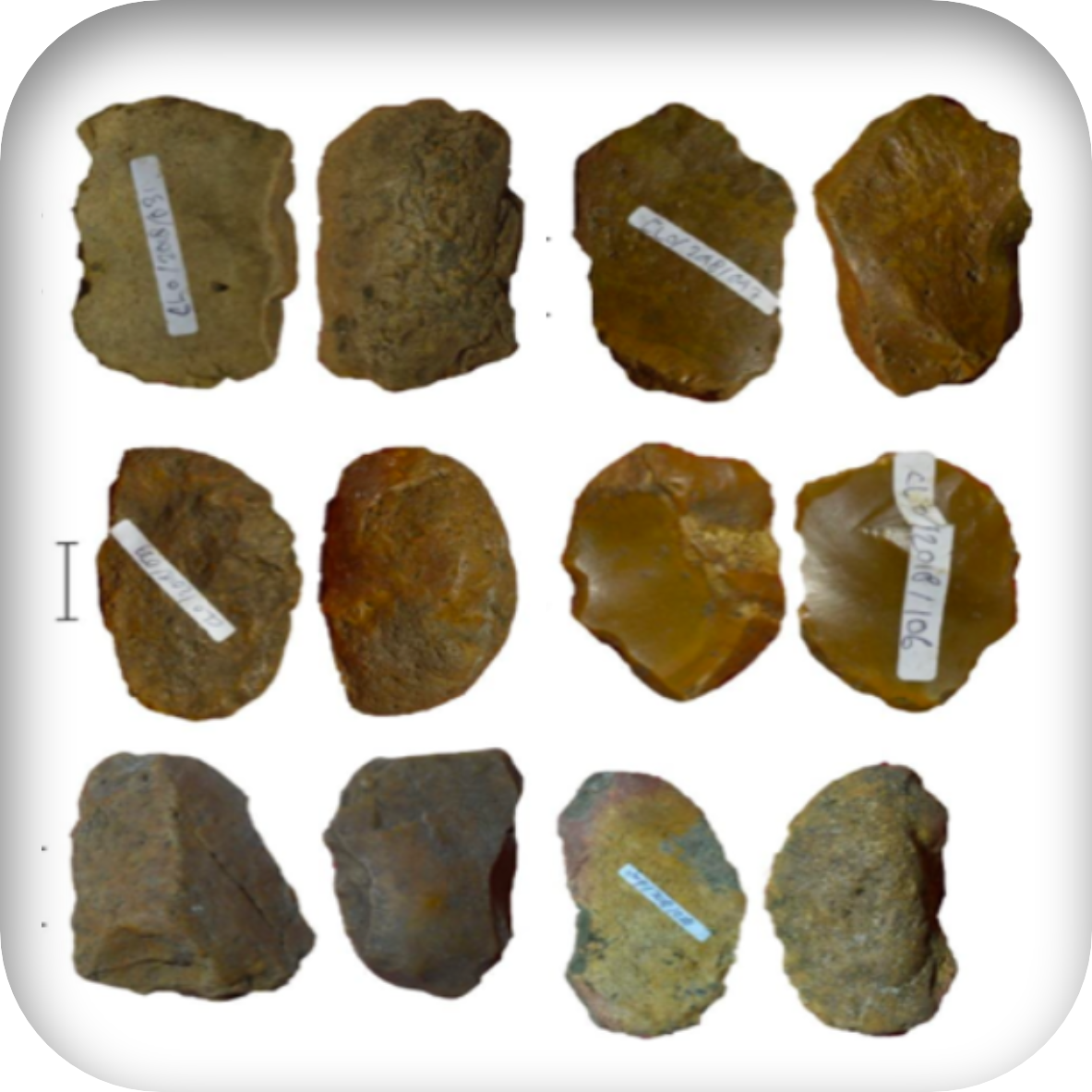Identification of raw materials for stone artifacts (silicified limestone) in The Talepu, Paroto, Jampu and Calio Sites Identifikasi bahan baku artefak batu (gamping kersikan) di Situs Talepu, Paroto, Jampu dan Calio
Main Article Content
Abstract
This research discuss about identification of raw materials for gravelly limestone artifacts in Walennae Valley area as the oldest settlement in Sulawesi with dating from 200.000 years ago. The method used for this research are library and field research (survey and interview) and also 3-dimensional recording. Data processing includes morphological-technological and petrological analysis with two analysis models, namely thin section analysis and spectrometric analysis on stone artifact samples. The results show that the morphological-technological material of limestone artifacts consists of two categories, core tools and retouched flakes. The identification of the limestone raw materials describe the process of limestone formation that occurs due to the transformation and weathering of CaCO3 compounds (calcite minerals) to form SiO2 compounds (silica minerals). In Walennae Valley, the human adaptation in utilizing and exploiting the raw materials for stone artifacts greatly influenced by the natural and environmental conditions of tropical forests.
Article Details

This work is licensed under a Creative Commons Attribution-NonCommercial-ShareAlike 4.0 International License.
References
Akram, K. (2019). Karakteristik bahan baku artefak batu di Situs Paroto, Situs Talepu, Situs Calio dan Situs Jampu : sumber gamping gersikan. [skripsi, universitas hasanuddin].
Alink, G., Adhityatama, S., & Simanjuntak, T. (2017). Descriptive analysis of palaeolithic stone tools from sulawesi, collected by the indonesian-dutch expedition in 1970. Jurnal Amerta 35(2), 75–92.
Andrefsky Jr, W. (2005). Lithics: macroscopic approaches to analysis. Cambridge University Press.
Arias, P. (1992). Lithic raw materials exploitation in the Western coastal area of Asturias (8th-3rd Millennia B.C. In Mora, REd.) Tecnología y Cadenas Operativas Líticas (Mora, REd.) Treballs d´Arqueología Vol. 1 (hal. 37-56). Universidad Autónoma de Barcelona.
Arrizabalaga, A., Calvo. A., Elorrieta, I., Tapia, J., & Tarriño, A. (2014). Where to and what for?: Mobility patterns and the management of lithic resources by gravettian hunter-gatherers in the Western Pyrenees. Journal of Anthropological Research 70(2), 233–61. doi: 10.3998/jar.0521004.0070.204.
Bartstra, G.J. (1977). Walanae formation and walanae terraces in the stratigraphy of south sulawesi (Celebes, Indonesia).” Quartar 27/28, 21-30.
Bartstra, G.J., Keates, S.G., Basoeki, & Kallupa, B. (1991). On the dispersion of homo sapiens in Eastern Indonesia: The Palaeolithic of South Sulawesi. Current Anthropology 32(3), 317-321. https://doi.org/10.1086/203960 .
Bellwood, P. (2000). Prasejarah kepulauan indo-malaya. Gramedia Pustaka Utama.
Dunham, R.J. (1962) Classification of carbonate rocks according to depositional texture. In Ham, W.E. (Ed.) Classification of Carbonate Rocks, AAPG, Tulsa, 108-121.
Heekeren H.R. Van. (1957). The stone age of indonesia 1st ed. Martinus Nijhoff.
Heekeren H.R. Van. (1972). The stone age of indonesia 2nd ed. Martinus Nijhoff
Herz, N., & Garrison, E.G. (1998). Geological methods for archaeology. Oxford University Press.
Keates S.G. & Bartstra, G.J. (2001). Obsevations on cabengian and pacitanian artefacts from island Southeast Asia. Quartar, 51/52, 9-32
Keates, S.G., & Bartstra, G.J. (1994). Island migration of early modern homo sapiens In Southeast Asia: the artifacts from the walanae depression, Sulawesi, Indonesia. Palaeohistoria, 33/34, 19-30.
Suryatman, Hakim, B, & Sardi, R. (2016). Industri alat batu cabenge di lembah walennae. In Lembah Walennae (hal. 35-69). Ombak
Suyono, & Kusnama. (2010). Stratigraphy and tectonics of the sengkang basin, South Sulawesi. Jurnal Geologi Indonesia, 5(1), 1-11.
Tarriño, A. (2011). Provenance of flint from Aitzbitarte-III cave (Rentería, Gipuzkoa). In J. Altuna, K. Mariezkurrena, & J. Ríos (Ed.) Ocupaciones humanas en Aitzbitarte III (País Vasco) 33.600-18.400 BP (hal. 353-373.) EKOB Euskal Kultura Ondare Bilduma Vol. 5, Vitoria-Gasteiz.
Thiry, M., & Milnes, A. (2017). Silcretes: Insights into the occurrences and formation of materials sourced for stone tool making. Journal of Archaeological Science: Reports 15, 500–513. doi: 10.1016/j.jasrep.2016.08.015.
Tucker, M.E., Wright, V.P., & Dickson, J.A.D. (2002). Carbonate sedimentology. 7th Ed. Blackwell Scientific Publications.
Van den Bergh, G. (1999). The late neogene elephantoid-bearing faunas of Indonesia and their palaeozoogeographic implications: A study of the terrestrial faunal succession of Sulawesi, Flores and Java, including evidence for early hominid dispersal east of Wallace’s Line. Scripta Geologica 117, 1-419
Van Den Bergh, G.D., Li, B., Brumm, A., Grün, R., Yurnaldi, D., Moore, M.W., Kurniawan, I., Setiawan, R., Aziz, F., Roberts, R.G., Suyono, Storey, M., Setiabudi, E., & Morwood, M.J. (2016). Earliest hominin occupation of Sulawesi, Indonesia. Nature 529(7585), 208–11. doi: 10.1038/nature16448.
Zaim, Y., Aziz, F., Widianto, H., & Simanjuntak, T. (2012). Kehidupan manusia purba. In Indonesia dalam Arus Sejarah Prasejarah. PT Ichtiar Baru van Hoeve dan Kementrian Pendidikan dan Kebudayaan RI.

